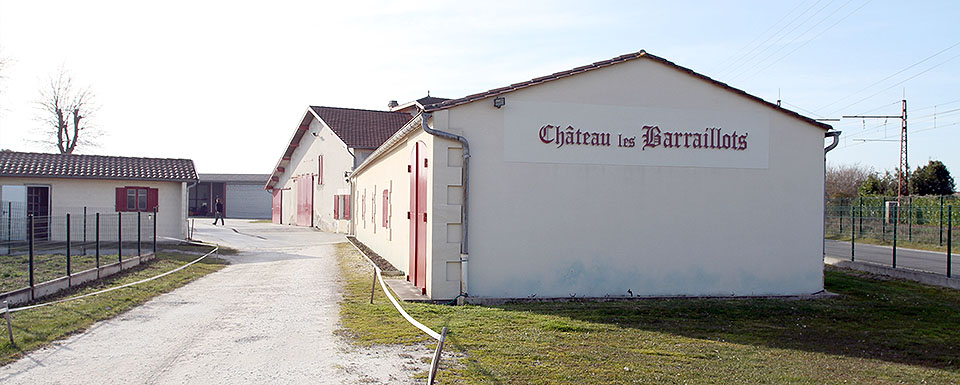
Driving along the side of the railway track into the unassuming French village of Margaux, you could be forgiven that this rather modest community doesn’t have much going for it. You would be wrong. The village, made up of mostly of single-storey houses with shuttered windows, is home to several of the magic wine names of France’s Bordeaux region. The very mention them is enough to make a wine-lover’s eyes glaze over and murmur “Ah, yes…” as though recalling some distant memory of long ago. You see, Bordeaux is the largest fine-wine production area in the world and rich with evocative names, villages and châteaux where these legendary wines are produced. But don’t be deceived by the magic: most of the 700 million bottles of wine produced every year in Bordeaux is just ordinary table wine.
Bordeaux lies near France’s Atlantic coast and includes fifty-four appellations (or specific wine-growing areas), which differ dramatically in size and sometimes even overlap. The River Gironde sweeps through the region and the area known as the Médoc lies on the Atlantic side of the river (the left bank) between its mouth and the city of Bordeaux, a distance of about forty-five miles. The Médoc includes the four famous communes of St-Estèphe, Pauillac, St. Julien and Margaux. Of course, it’s slightly more complicated than that, but if you want more detail, it’s easy to find a map of the Bordeaux wine regions online.
At the turn of the 3rd century, Bordeaux was the capital of Roman Aquitaine, complete with paved streets, canals, bathhouses, aqueducts and of course, vineyards. Margaux is thought to be the first area in which the Romans planted vines. In 1855, on the orders of Napoleon, the most prestigious châteaux of Bordeaux were ranked into five classes, a classification that still exists to this day. The village of Margaux has the largest concentration of classified chateaux in Bordeaux with twenty-one classed growths. These are top-quality wines and are magic names indeed to any wine lover. Among the most well-known châteaux in Margaux are Château Giscours, Ch. Boyd-Cantenac, Ch. Lascombes and of course the famous Ch. Margaux itself.
In his classic wine book, Hugh Johnson wrote, “Margaux is a superlative commune of the Médoc and perhaps the best-known of all. Undoubtedly the fact that Ch. Margaux, its one first-growth has the same name as the village has helped. Many people have confused the two and thought they were getting one of the world’s greatest wines, when they were really only getting an ordinary blended wine from the district”. Wines that simply bear the name “Margaux” on the label could come from over eighty different lesser châteaux. And incidentally, the word “château” doesn’t translate as “castle”. Perhaps “manor house” would be a better word, though smaller wineries often consist of a motley collection of undistinguished farm-like buildings.
When you buy Bordeaux wine, you really have to take careful note of the vintage year. Because of its proximity to the Atlantic Ocean, the weather in Bordeaux is extremely variable. The years 2015 and 2016 for example, were exceptional for Margaux, yet 2013 was a bit of a disaster and few decent wines could be made. The result is that even from the same château, wines can be dramatically different from one year to another.
Château Les Barraillots, Margaux 2017 (red) 644 THB @ VinestoVin
Established in 1928, Ch. Les Barraillots (Sha-TOH lay BAH-ree-ah-loh) lies on Rue Corneillan in Margaux village, right by the railway track and just down the road from the rather imposing train station. It’s the last small and independent wine producer in the village and one of only a few “Crus Artisans” in the Margaux appellation. The average age of the vines in the 7-hectare vineyard is about forty years and the varietal mix is 55% Cabernet Sauvignon, 30% Merlot and 15% Cabernet Franc/Petit Verdot.
 The year 2017 was marked by serious frosts early in the growing season though some producers managed better than others. Because of the challenging weather conditions this remains a basic Margaux. At first sniff, the aroma seems a bit shy and it really needs time to emerge. The temperature is fairly critical too for Bordeaux and I’d suggest about 16°C (or 61°F) is best. It’s as dry as they come of course, but there’s a smooth, velvety texture to the body and, in typical Bordeaux style the firm tannins are well to the fore, giving it a sense of structure. The dark cherry fruit comes through slowly but you’ll be rewarded with a delicate hint of violets and there’s a pleasant blooming of the taste in the mouth after swallowing. The wine comes at 13% ABV which is usual for Bordeaux wines of this type and vintage and it’s a light and pleasant wine.
The year 2017 was marked by serious frosts early in the growing season though some producers managed better than others. Because of the challenging weather conditions this remains a basic Margaux. At first sniff, the aroma seems a bit shy and it really needs time to emerge. The temperature is fairly critical too for Bordeaux and I’d suggest about 16°C (or 61°F) is best. It’s as dry as they come of course, but there’s a smooth, velvety texture to the body and, in typical Bordeaux style the firm tannins are well to the fore, giving it a sense of structure. The dark cherry fruit comes through slowly but you’ll be rewarded with a delicate hint of violets and there’s a pleasant blooming of the taste in the mouth after swallowing. The wine comes at 13% ABV which is usual for Bordeaux wines of this type and vintage and it’s a light and pleasant wine.
If you are tempted to splash out and try the impeccable Château Margaux, be prepared to sell the cat. You can buy the exceptional 1996 Ch. Margaux in the UK for the equivalent of about Bt 30,000 per bottle. However, if you want the legendary 1929 vintage (which won’t be easy) be prepared to fork out considerably more. Of course, by now, the 1929 vintage has peaked in maturity and it’s evidently now undergoing a steady but graceful decline. A bit like me, I suppose.
 |
 |
 |





